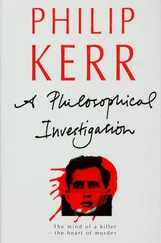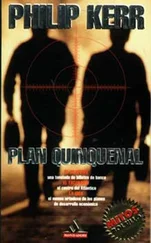Philip Kerr - A Quiet Flame
Здесь есть возможность читать онлайн «Philip Kerr - A Quiet Flame» весь текст электронной книги совершенно бесплатно (целиком полную версию без сокращений). В некоторых случаях можно слушать аудио, скачать через торрент в формате fb2 и присутствует краткое содержание. Жанр: Полицейский детектив, на английском языке. Описание произведения, (предисловие) а так же отзывы посетителей доступны на портале библиотеки ЛибКат.
- Название:A Quiet Flame
- Автор:
- Жанр:
- Год:неизвестен
- ISBN:нет данных
- Рейтинг книги:3 / 5. Голосов: 1
-
Избранное:Добавить в избранное
- Отзывы:
-
Ваша оценка:
- 60
- 1
- 2
- 3
- 4
- 5
A Quiet Flame: краткое содержание, описание и аннотация
Предлагаем к чтению аннотацию, описание, краткое содержание или предисловие (зависит от того, что написал сам автор книги «A Quiet Flame»). Если вы не нашли необходимую информацию о книге — напишите в комментариях, мы постараемся отыскать её.
A Quiet Flame — читать онлайн бесплатно полную книгу (весь текст) целиком
Ниже представлен текст книги, разбитый по страницам. Система сохранения места последней прочитанной страницы, позволяет с удобством читать онлайн бесплатно книгу «A Quiet Flame», без необходимости каждый раз заново искать на чём Вы остановились. Поставьте закладку, и сможете в любой момент перейти на страницу, на которой закончили чтение.
Интервал:
Закладка:
“He’s not here,” she said.
“I suppose he’s in Leverkusen.”
“No, he’s in Wuppertal.”
That was somewhere else I hadn’t ever heard of. There were times when I hardly recognized the country in which I was living.
“I suppose that’s another new town.”
“I wouldn’t know,” she said.
“Who’s in charge while he’s away?”
“Dr. Kassner.”
“Then he’s the person I want to see.”
“Have you an appointment?”
I smiled, affecting a show of self-important patience. “I think you’ll find I don’t need one. If you give Dr. Kassner that business card. You see, nurse, I fund all of the research in this clinic. So unless you want to join the ranks of the six million unemployed, I suggest you hurry along and tell him I’m here.”
The nurse colored a little, stood up, took Duisberg’s card, and, her feet squeaking like a series of squashed mice, disappeared through a set of swing doors.
A minute passed and a pale, awkward man came through the main entrance of the clinic. He was walking slowly, like someone with a bad leg. He kept his eyes on the linoleum, as if expecting to find a better explanation than an overdose of floor polish for the noise under his shoes. At the desk, he stopped and gave me a sideways sort of look, probably wondering if I was some kind of doctor. I smiled at him.
“Lovely day,” I said breezily.
Then a man in a white coat appeared in the hall, striding powerfully toward me like a founding member of the Wandervogel, one hand outstretched and the other holding Duisberg’s business card. He was big and bald-headed, which made him seem more military than medical. Underneath the white coat, he was dressed much as I was, a professional man with a position in the community.
“Dr. Duisberg, sir,” he said unctuously, with a slight speech impediment that might have been due to some ill-fitting false teeth. “What an honor, sir. What an honor. I’m Dr. Kassner. Dr. Domagk will be so very disappointed to have missed you. He’s in Wuppertal.”
“Yes, so I’ve just been informed.”
The doctor looked pained. “I trust there hasn’t been some kind of a mix-up and that he wasn’t expecting you,” he said.
“No, no,” I said. “I’m only in Berlin for a brief visit. I had a short time to kill between appointments, so I thought I might just drop by and see how the clinical trial is coming along. The Dyestuff Syndicate is very excited by your work, here.” I paused. “Of course, if it’s inconvenient…”
“No, no, sir.” He bowed. “If you’re happy to make do with my own inadequate explanations.”
“I’m sure they will be quite sufficient for a layman like me.”
“Then, do, please, come this way, sir.”
We went through the swing doors and into a corridor where a dozen or more rather miserable-looking men were seated along the wall, each of them holding what was either a urine sample or a very poor example of Berlin’s notoriously unpleasant tap water. Kassner ushered me into his office, which was suitably clinical. There was an examination couch, some shelves stuffed with medical textbooks, a couple of chairs, some filing cabinets, and a small desk. On the desk was a portable Bing with a sheet of paper rolled into the carriage, and a telephone. On the walls were some graphic illustrations that had me shrinking into my bladder and were almost enough to persuade me to take a vow of celibacy. I reflected I was probably the first man in a long while who’d walked into that little office and not been asked to drop his trousers.
“How much do you know about our work here?” he asked.
“Only that you’re working on a new magic bullet,” I said. “I’m not a medical doctor. I’m a chemical engineer. Dyestuffs are my forte. Just assume you’re explaining things to an educated layman.”
“Well, as you probably know, sulfa drugs are synthetic antimicrobial agents that contain sulfonamides. One of those drugs-a drug called protonsil-was synthesized by Josef Klarer at Bayer and tested on animals by Dr. Domagk. Successfully, of course. Since then, we’ve been testing it on a small group of outpatients who are suffering from syphilis and gonorrhea. But, in the course of time, we hope to find that protonsil will be effective in treating a whole range of bacterial infections inside the body. Oddly, it has no effect in the test tube. Its antibacterial action only seems to work inside living organisms, which leads us to suspect, and to hope, that the drug is successfully metabolized inside the body.”
“How big is your trial group?” I asked.
“Really we’ve only just started. So far we’ve given protonsil to approximately fifty men and about half as many women-there’s a separate clinic for them, of course, at the Charite. Some of our test cases have only just caught a venereal disease and others have had one for a while. It’s intended that over the next two or three years we shall test the drug on as many as fifteen hundred to two thousand volunteers.”
I nodded, almost wishing I had thought to bring Illmann with me. At least he might have asked some pertinent questions; even a few impertinent ones.
“So far,” continued Kassner, “the results have been very encouraging.”
“Might I see what the drug looks like?”
He opened his desk drawer and took out a bottle and then emptied some little blue pills onto my gloved palm. These looked exactly the same as the little pill I’d found near Anita Schwarz’s dead body.
“Of course, it won’t look like that when the trial is over. The German medical establishment is rather conservative and prefers its pills white. But they’re blue for the moment, to help distinguish them from anything else we’re using.”
“And your study group notes? Might I see one case file?”
“Yes, indeed.” Kassner turned to face one of the wooden filing cabinets. There was no key. He drew up the tambour front and then pulled open the top drawer. “This is a summary file containing brief notes on all of the patients who’ve been treated with protonsil to date.” He opened the file and handed it over.
I took out my father’s pince-nez. A nice touch, I told myself, and pinced them on the bridge of my nez. This was my list of suspects, I told myself. With these names I might very well have solved the case in less time than it took to cure a dose of jelly. But how was I going to get hold of this list of names? I could hardly memorize it. Nor could I ask to borrow it. One name caught my eye, however. Or rather not the name-Behrend-so much as the address. Reichskanzlerplatz, in the west end of the city, near the Grunewald, was undoubtedly one of the most exclusive addresses in the city. And for some reason it appeared familiar to me.
“As you probably know,” Kassner was saying, “the problem with salvarsan is that it is only slightly more toxic for the microbe than the host. No such problems have presented themselves with protonsil rubrum. The human liver deals with it quite effectively.”
“Excellent,” I murmured, as I glanced further down the list. But when I saw two Johann Mullers, a Fritz Schmidt, an Otto Schneider, a Johann Meyer, and a Paul Fischer, I began to suspect that the list might not be all I’d hoped it was. These were five of the most common surnames in Germany. “Tell me something, Doctor. Are these real names?”
“To be honest, I don’t know,” admitted Kassner. “We don’t insist on seeing identity cards here, otherwise they might never volunteer for the clinical trial. Patient confidentiality is an important issue with moral diseases.”
“I suppose that’s especially true since the National Socialists started talking about a cleanup of morals in this city,” I said.
“But all of those addresses are real enough. We do insist on that so that we might correspond with our patients over a period of time. Just to keep a check on how they’re all doing.”
Читать дальшеИнтервал:
Закладка:
Похожие книги на «A Quiet Flame»
Представляем Вашему вниманию похожие книги на «A Quiet Flame» списком для выбора. Мы отобрали схожую по названию и смыслу литературу в надежде предоставить читателям больше вариантов отыскать новые, интересные, ещё непрочитанные произведения.
Обсуждение, отзывы о книге «A Quiet Flame» и просто собственные мнения читателей. Оставьте ваши комментарии, напишите, что Вы думаете о произведении, его смысле или главных героях. Укажите что конкретно понравилось, а что нет, и почему Вы так считаете.












